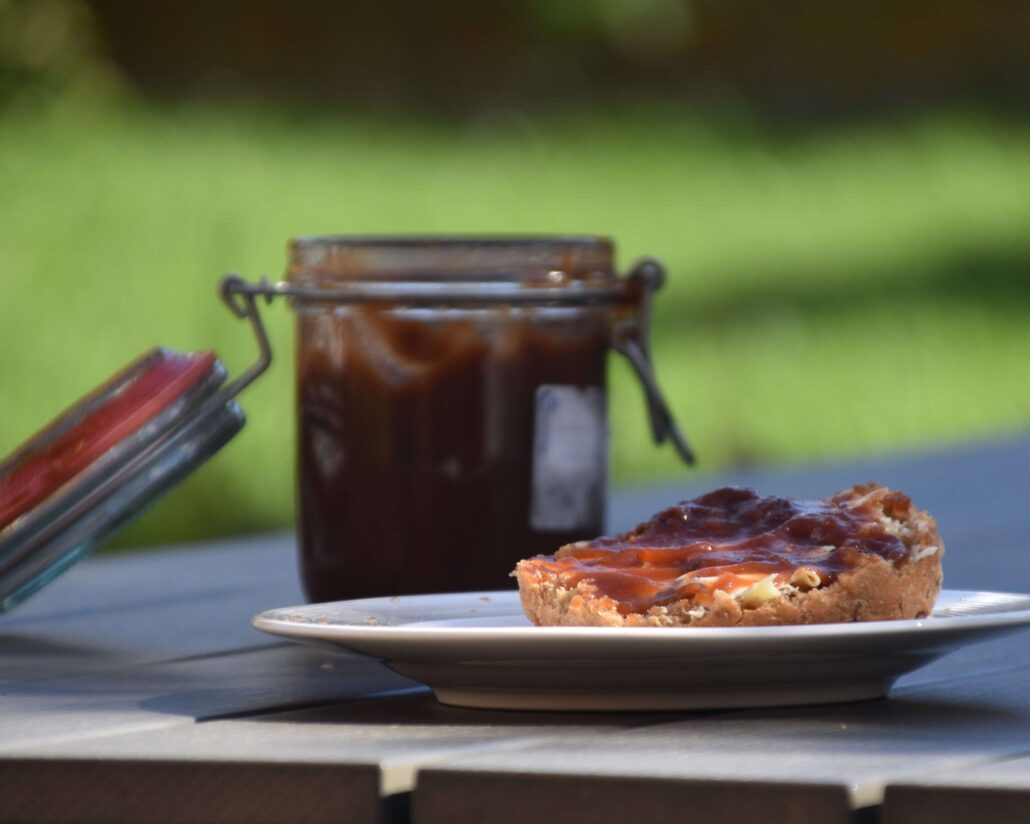Gardening, Out and About, Recipes, Uncategorized
Appelstroop
Have you come across stroopwafels yet? They are traditional Dutch biscuits, that seem to be popping up in all supermarkets suddenly. ‘Stroop’ is the sticky stuff in the middle. It actually is an old-fashioned by-product of sugar production. When sugar is won from sugar beets, there’s a left-over sugar beet juice. Rather than just throw it away, the Dutch long ago decided to boil it down to a lovely, sticky sweet, slightly smokey … well, stroop.
Likewise, apple juice, can be boiled down to appelstroop.
The taste is distinctly different –not so much the caramelly sweetness, but a fruity freshness- but good nonetheless.
Appelstroop is a supermarket basic in the Netherlands, and can be found in parts of Germany, Belgium and France. And it has it’s own festival in several of the United States. But it’s not readily available in the UK, alas.
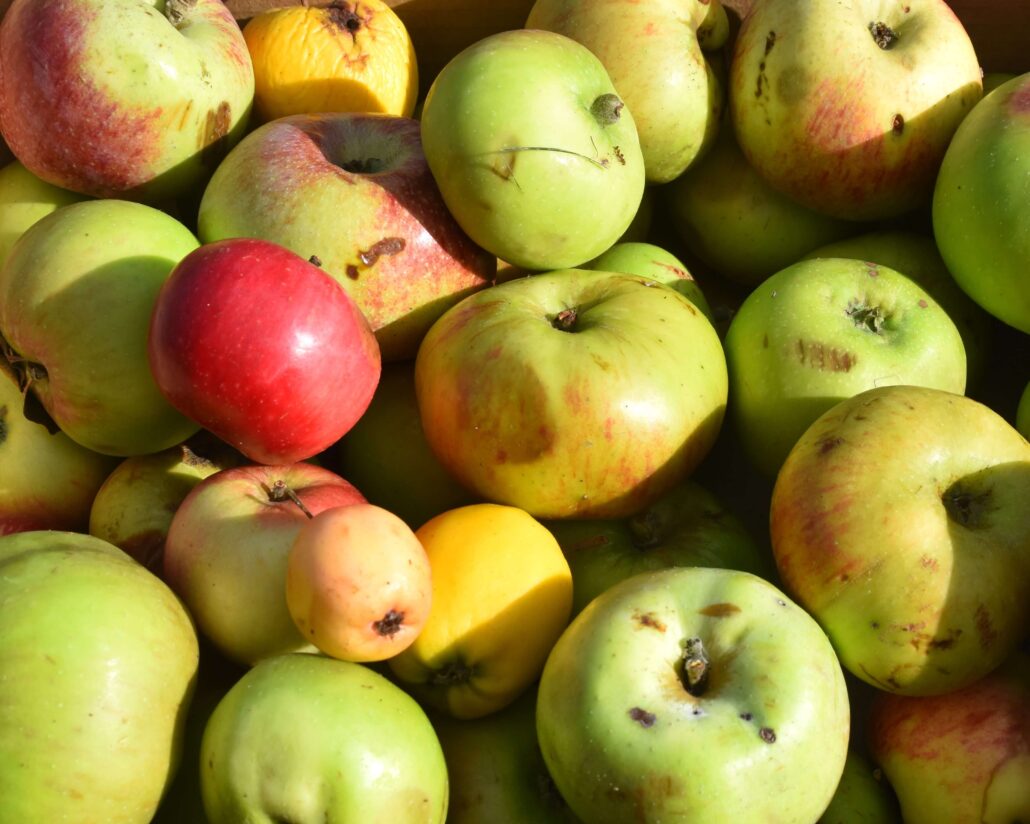
So, with apples being abundant this time of year, lying about to rot away in the park and playground, I thought I’d make my own. This is an ideal way to use apples that would otherwise be discarded. Wonky windfalls, slightly bruised ones, and even crab apples. A mix of different sorts will give the best results. It is a fairly simple process, but you need a lot of apples. And a lot of time.
- Make sure you don’t have any rot in there, wash, quarter and toss all apples a large pot. Big ones may be chopped up a bit more, but don’t worry about skins and cores, you can just leave them on.
- Add water till about halfway up.
- Boil to a pulp.
- Strain through a cloth.
- Bring the juice to a boil and leave simmer on the lowest possible heat until it’s a thick, dark, spreadable paste.
If you are using particularly sour apples, such as crab apples, you may want to add some spoonfuls of sugar. (Or if you just like a sweeter apple butter.)
You can also play around a bit with flavourings. I added a cinnamon stick, some add star anise.
Towards the end, I also added raisins, (go for chopped up dates for a fancy touch). Don’t do this too soon, as the volume will greatly diminish, and your stroop-raisin ratio will be off.
Be aware the boiling down takes hours. And hours. And then some more hours.
It does depend on the amount of juice you’re using, of course. But I was silly and thought I’d go for a lot, since it only yields to a little stroop.
I actually started off with a crazy lot of apples, thinking it otherwise wouldn’t be worth the effort. I had not realised that would increase the effort. My pan overboiled in the juicing process and then I had so much apple mush, there was no way of fitting it all into my nut sack at once for the straining. Furthermore, I found having had a new handle-less kitchen installed, I no longer had anywhere to actually hang the nut sack. I came up with a construction using a funnel as well.
It looked really neat and I felt quite proud of myself. But I had to work in batches, and I had so many apples … I started squeezing out juice with my hands hurriedly to speed up things a bit. Thus I ended up with a lot of sticky apple juice running down my elbows and all over the kitchen. You can do better. No doubt.
I stopped when I had a good two litres of apple juice. (The rest of my apple mash turned out to be so apply, and containing so little core, I ran it through a colander and it made a fine apple sauce still.) These two litres took about fifteen hours (yes, fifteen hours – after staying up late thinking it must be nearly there for about an hour or two, I gave up for that day and started again the next, when it still took all of the day) to boil down to two jars of apple butter.
It tasted really good though.
Will I be doing this again any time soon? I don’t think so.
But, if you’re not as greedy as I was and accept that you’ll only get one little jar, you can start with far less apples. You’ll be able to just leave your nut sack to drip overnight (or actually, I think you could just use a fine sieve too), and the boiling down will take much less time. Hours still, but you don’t need to give it any attention until it gets really dark and thick, when you’ll only want to give it an occasional stir to make sure it’s not setting to the bottom of your pan.
And then it really is an easy way to do something different with excess apples.
It’ll taste good on bread, pancakes and crumpets, or in yoghurt or porridge. It combines well with cheese, may add flavour to a beef stew … just taste it and come up with your own ideas for use.
Otherwise, you can always try this recipe for apple jelly.
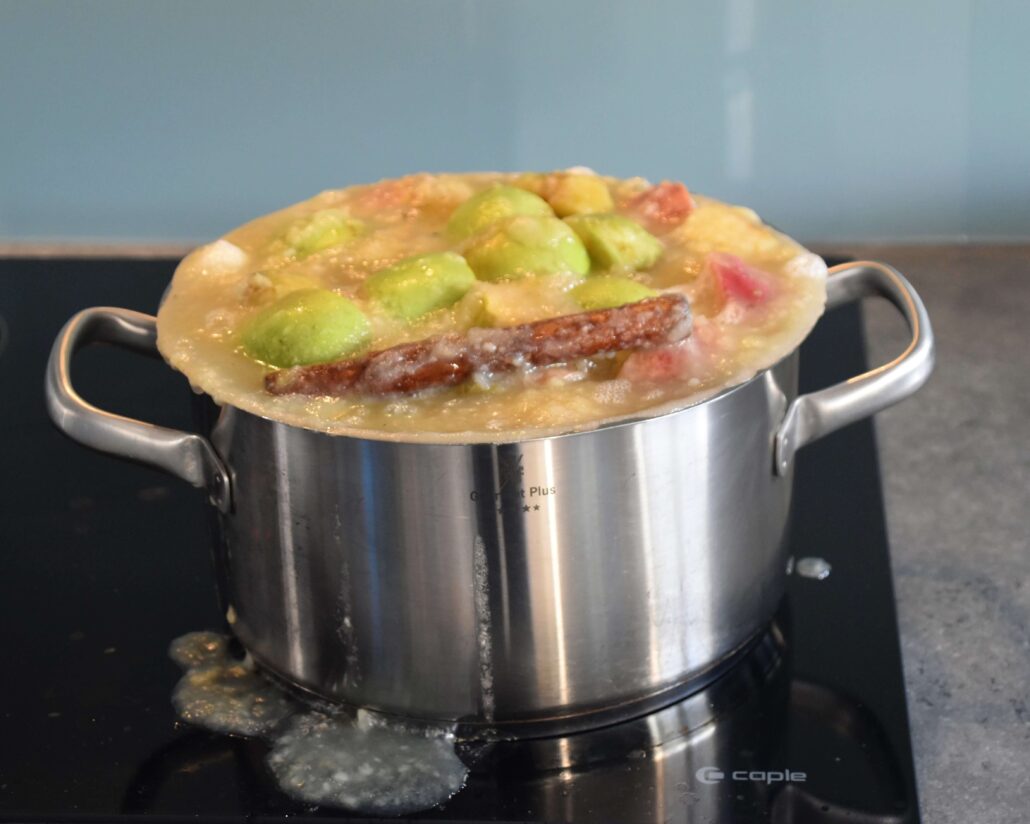
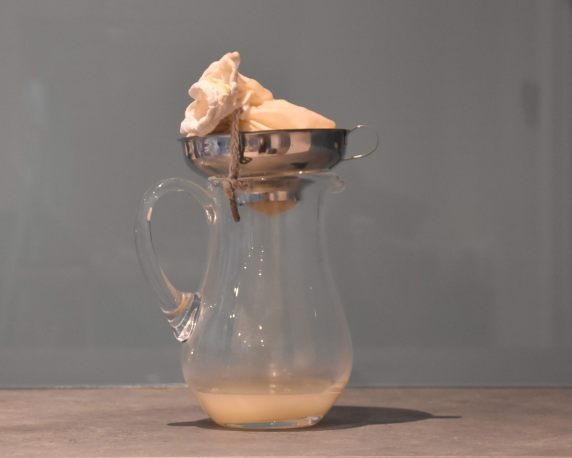
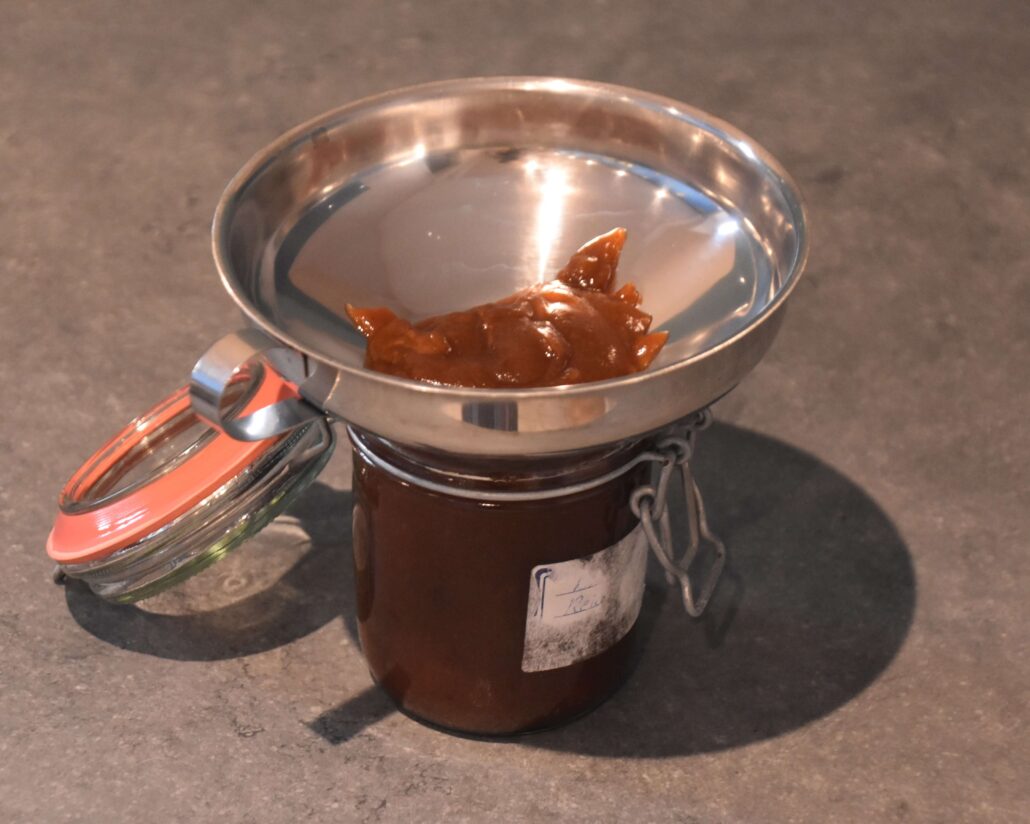
P.S. in Dutch, the second ‘o’ only makes for a longer o-sound, so stroop does not rhyme with scoop, but with scope.

